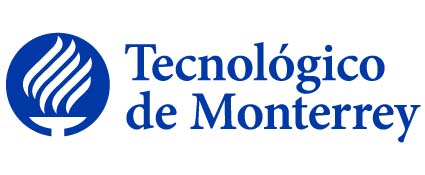
|
|||||
Disciplina asociada:Agronomía |
|||||
Escuela:
Ingeniería y Ciencias
|
|||||
Departamento Académico:
Bioingeniería
|
|||||
Programas académicos: |
|||||
Requisitos:No tiene. |
|||||
Equivalencia:No tiene. |
|||||
Intención del curso en el contexto general del plan de estudios: |
|||||
|
Es un curso de nivel básico, que tiene la intención de aplicar los conocimientos de morfología vegetal en la identificación de plantas de interés para el agrónomo, así como el valorar su importancia como recursos bióticos en un marco de desarrollo sostenible. Requiere conocimientos previos de anatomía y fisiología vegetal. Como resultado del aprendizaje, se espera que el alumno colecte plantas y elabore ejemplares de herbario, pueda identificar y clasificar hojas, partes florales y tipos de frutos; así mismo, identificar a vista y con claves botánicas plantas de interés agrícola, pecuario o forestal. |
|||||
Objetivo general de la Unidad de Formación: |
|||||
|
Al terminar el curso el alumno será capaz de: Usar equipos de colecta y aplicar técnicas de herborización. Caracterizar la morfología vegetativa y floral. Explicar la presión e impacto ambiental que se ejerce en los recursos bióticos vegetales, y la problemática de su agotamiento ante la ausencia de un manejo sostenible, así como identificar familias, géneros y especies mediante manejo de claves y a simple vista. |
|||||
Técnica didáctica sugerida: |
|||||
| No especificado | |||||
Bibliografía sugerida: |
|||||
|
LIBROS DE TEXTO: * Dimitri, Milan Jorge., Tratado de morfología y sistemática vegetal , , Buenos Aires : Acme Agency, 2009, , 9505661266, 9789505661268 |
|||||
Perfil del Profesor: |
|||||
|
(011102)Maestría en Agronomía y Manejo de Cultivos ; (260101)Maestría en Biología/Ciencias Biológicas ; (011102)Doctorado en Agronomía y Manejo de Cultivos ; (260101)Doctorado en Biología/Ciencias Biológicas CIP: 011102, 260101 |
|||||
|
|||||
Discipline:Agronomy |
|||||
School:
Engineering and Sciences
|
|||||
Academic Department:
Bioengineering
|
|||||
Programs: |
|||||
Prerequisites:None. |
|||||
Equivalences:None. |
|||||
Course intention within the general study plan context: |
|||||
|
This is a basic level course, designed to help students apply their knowledge of vegetable morphology in the identification of plants of interest to agronomists, as well as in the evaluation of their importance as biotic resources within the framework of sustainable development. Previous knowledge is required in plant anatomy and physiology. The learning outcome for this course is that the students collect plants and prepare herbarium samples, identify and classify leaves, flower parts and fruit types and identify, by sight and with botanical keys, plants of interest in agriculture, animal husbandry or forestry. |
|||||
Course objective: |
|||||
|
Upon completion of this course, students will be able to: Use collection equipment and apply botanizing techniques; depict plant and floral morphology; explain the pressure and environmental impact on biotic plant resources and the problem of their depletion in the absence of sustainable management; identify families, genera and species using keys and with the naked eye. |
|||||
Teaching and learning tecniques: |
|||||
| Not Specified | |||||
Suggested Bibliography: |
|||||
|
TEXT BOOKS: * Dimitri, Milan Jorge., Tratado de morfología y sistemática vegetal , , Buenos Aires : Acme Agency, 2009, , 9505661266, 9789505661268 |
|||||
Academic credentials required to teach the course: |
|||||
|
(011102)Master Degree in Agronomy and Crop Science and (260101)Master Degree in Biology/Biological Sciences and (011102)Doctoral Degree in Agronomy and Crop Science and (260101)Doctoral Degree in Biology/Biological Sciences CIP: 011102, 260101 |
|||||